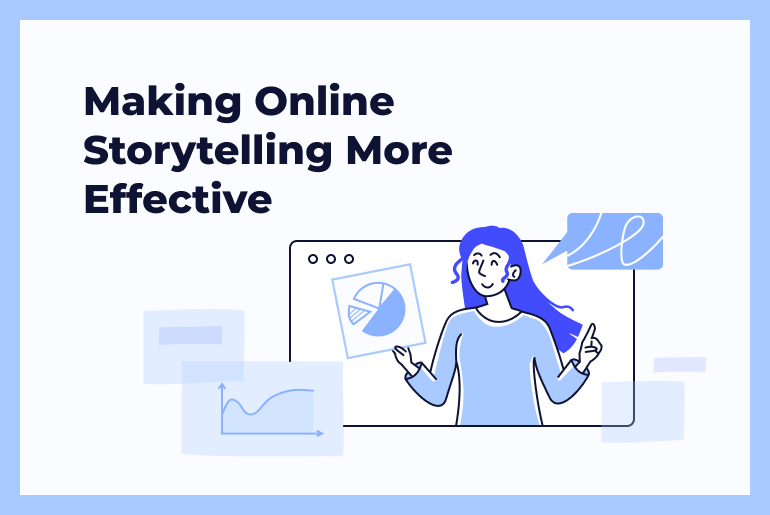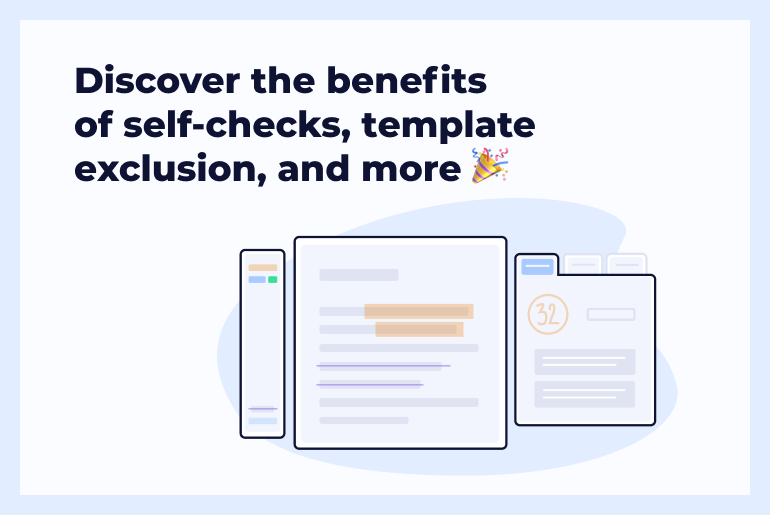E-learning has been around for quite a while, but not all the academic institutions succeeded in adopting new educational models.
We’ve talked over this issue and a lot more hot topics with Dr. Brendan Moloney, an Australian entrepreneur, author, and public speaker.
As an academic by background, Brendan used to work at the University of Melbourne and completed his PhD there as well. He had been observing big changes in the university sector and put together a team of fellow PhDs from around Australia and the world to create Darlo.
They work on e-learning projects, helping put universities’ curriculum online, translating a lot of their face-to-face training or educational courses onto new platforms.
Down below, Brendan’s giving his take on what can make an online course effective, how to align students’ interests with course goals and keep them motivated to complete it. Let’s cut to the chase.
Unicheck: Do you think that e-learning can completely replace traditional education in the future?
Brendan: That’s a great question. I think you have to look at traditional education. It’s been run by national governments and largely from workforce planning. It’s about how governments have supported the industry in creating the workers. But now, with globalization, there’s more choice and freedom. We can work with people from around the world, or they can work with us.
Life long employment and traditional jobs are largely breaking down and new things are happening. I don’t think a government is going to disappear, or that national workforce planning is going to vanish one day, so universities will have a place.
But for a lot of people, there are so many non-traditional pathways for learning. As we look to the future, with augmented and virtual reality, we’ll have a very different education system to the one that we have today.
Unicheck: For over eight years now, you’ve been running Darlo, helping launch education providers in Australia. Part of the job involves a lot of curriculum design and course-writing. How do you manage to align the learning process with the needs of the entire university or students?
Brendan: There are two strains of education. There’s education for skills, development and things, and then there’s a role for intellectual education where people are challenged with their ideas. Think about the depth of learning required for a particular student cohort and how that’s presented, and also how that meets the needs of students.
I know a lot of universities see online learning as a cost-cutting exercise, selling courses to students. Sometimes, they don’t like quite heavy, intellectual stuff because it’s often difficult to translate that online. I still think e-learning needs to recognize that students are a key part of the process, and that their literacy is probably one of the biggest skills they’re going to get out of any university-style education, like becoming a literate person within your profession.
You clearly want a doctor who knows anatomy and the language of the discourse, or engineers, or teachers, or what-have-you. As long as there’s no dumbing down, that’s key.
I know there’s a push for having short, quick, and snappy lessons, but there still needs to be some intellectual challenge and engagement for students.
Clearly, another issue about online programs is attrition.
Many students drop out of programs as soon as they startup. I really think while self-paced learning can be great, an instructor-led online course is better because there’s a possibility of human interaction.
So, the biggest challenge in course writing is to consider both: the depth of the content and engaging with the students.
Unicheck: Even though e-learning has a bunch of privileges, there’s still one problem. Online courses become outdated really fast. How do you tackle this issue?
Brendan: I believe you’re right. A big problem MOOCs and a lot of the larger course systems are facing is that they’ve just taken a very conventional lecture-theater style model and broadcast that online.
You’re taking something that could potentially be quite boring over an hour face-to-face and put it online and made it even more boring. I think that’s one thing. Two, often, the instructional design is not great, so there’s no distinction. Is it a technical skill people are learning? Is it something that needs to be applied? Is it a theoretical skill? When you break it down, you really need to have a sharper focus online. You can’t just ramble or put content up from the past.
It needs to be extremely relevant and purposeful for the student and why they are actually doing that part in the first place. I think it’s missing from a lot of MOOCs.
Unicheck: How to build a well-balanced course? Is there any secret sauce for making students engaged?
Brendan: There are a few things. First off, you need to do an analysis of what students want and need. There are very different niches now in terms of what people want. I also think video learning has really changed the game.
People are expecting a new kind of format for lessons and classes. That one- or two-hour format just doesn’t translate online at all. Breaking up content into smaller pieces is really quite important.
Another one is that a big driver of the education is accreditation or registration by somebody. If you know that you’re going to be registered as a doctor by the end of your course, you’re probably more likely to be incentivized to finish the course. If you don’t really have a reason, or there’s no kind of constraint around your learning, then it’s much harder. If you’re interested in a topic, like trains, people who love trains are probably going to be intrinsically motivated to learn everything they can about that. But if you’re not, then why would you even bother in the first place?
Having a clear purpose and expressing that to the students, and also putting them in a format that’s digestible for modern life, I think, is important.
And again, there’s a place for human contact — for whoever’s running the course to be involved in communicating and building a community with the students. There has to be an active role for teachers or for facilitators online where they’re approaching students and trying to find out more about them.
Unicheck: What’s the best way to identify students’ interests in order to create a really relevant and useful course?
Brendan: I think one of the things you’ve been looking at is building a body of knowledge. There’s so much content online that any publisher can’t claim to know everything about a topic, or produce everything they can.
It’s better to focus on a small amount of great quality content that you’ve selected, and then let students explore the internet. You can’t pretend it’s not there because they’re going to start looking for other content anyway. And then trying to integrate the two. So, you own quality content, which is well-known and is really useful for students — and also give them the option of building their own portfolios, or building their own knowledge bases. That’s the best top-up and bottom-down approach to course design.
Unicheck: Do you conduct interviews to better understand what students need?
Brendan: That’s it. If you want a course development model in a nutshell, you’d start with looking at the audience that you are writing for, you’d look at any relevant body of the knowledge they need, any accreditation requirements they might require, etc.
You’d also start mapping out learning objectives and learning outcomes, and putting that into place. Next, figure out how many modules you can put together and the purpose of each of them, storyboard the content, and then have people review it. And then, obviously, you’d deliver it on your platform.
Unicheck: You say that there is a high level of competition in the education field. In your opinion, what can help an academic institution stand out and attract more students?
Brendan: Learning experience is critical. As I said before, branded and high-quality, unique content is incredibly important for universities. It is always going to make you stand out from the competition.
If you look at the car industry, there’s room for lower-end cars and top-end cars like Lamborghinis or Tesla. It’s the same with educational content. There’ll always be a place for premium, branded, high-quality content, and there’ll always be more affordable, accessible content to use.
We offer white-label courses for universities, so if they want to get started and hit the ground running, we’ll provide online content, academic courses, and the like, so that they can very quickly access their students. Also, we do a fair bit of work in India at a different scale and budget. For the universities to afford to compete with, say, Australian or American, they need to have content up and running as soon as possible.
But then to be competitive, and to charge a premium, you need to invest more into content, more into technology, more into your systems. To have a more standard fair, you just need to have a decent instructional design that helps students.
A big question for me if it’s going to standalone online content or blended learning where students have supplementary support lessons to their main classes, which is the model that happens a lot in universities and colleges. This will decide much about how you budget for and how you invest in e-learning.
Unicheck: Do you think e-learning gives students more opportunities to go unnoticed while cheating?
Brendan: If people pay to cheat, it’s no different from cheating in any other part of life, like cheating on your taxes.
It’s an extremely deep problem globally. There’s new legislation coming out in government to make it illegal to purchase contract cheating services.
There’s a problem, but there’s also a solution. Online plagiarism can be tracked pretty easily. There’s a whole bunch of software around now and companies like yours that offer plagiarism and contract cheating detection.
With even better data analytics and machine learning, I think it’s getting harder to bypass algorithm for the contract cheaters to get around, specially if there are big databanks of knowledge.
Unicheck: What other technological trends are on your radar? Are emerging technologies making a big difference?
Brendan: There’s some really exciting news. Several companies are developing a bunch of great hardware for AR and VR. They are very education focused. It’s not actually based on any headsets. It’s based on having an iPad or hardware that projects holograms and AR and VR situations. That’ll not only transform education but also secondary and tertiary parts of the economy.
For instance, with the built environment, there will be buildings that will be decked out in AR/VR technology. There’ll be signs that have holograms all over it. It’s going to be a really huge trend, so there will be a lot more imagery and multimedia built into the environment, appliances, electronics, etc. I imagine that students and developers will be involved in the next tier of online or thee Internet of Things kind of stuff.
Unicheck: We’ve talked extensively about technologies and mentioned plagiarism checkers as part of the learning process. From your experience, do students consider plagiarism checkers as something evil, something that compromises trust in their skills?
Brendan: Again, it really comes down to a student’s view of academic integrity. Most students can understand why their papers go through checks. Honest students should not have any issues with that. They’re probably happy that people who are cheating are getting busted.
At the end of the day, it’s a problem that needs to be addressed. People see it as one of the rules or the laws of academia now. Everyone would love to speed on the road, but they realize that there are rules in place for a reason. It’s the same with this kind of software for students. And it creates equal conditions for learning, which is a good thing.





